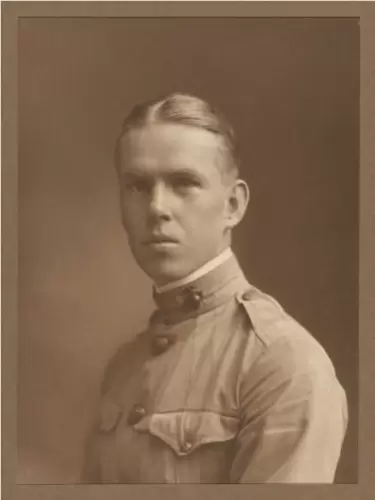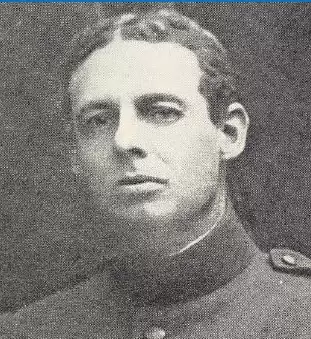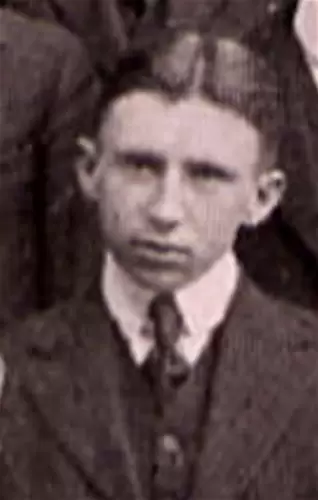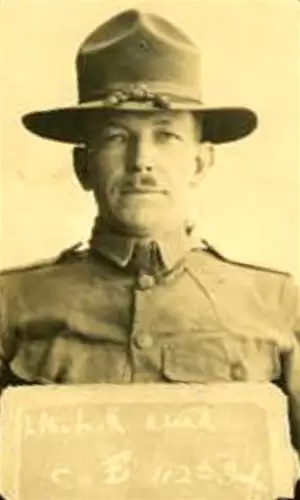World War I, also called the First World War, the Great War, and the War to End All Wars, began in Europe in 1914. But it was not until April 6, 1917—100 years ago– that the United States Congress declared war against Germany and entered the war. The American Expeditionary Force was soon organized and sent off to France, within months, to join the fight; by the time an armistice was declared, in November of 1918, more than 4.7 million Americans had served at home and abroad, 53,000 had been killed in action, 63,000 had died of disease, and 205,000 had been wounded.
A year ago, Green-Wood decided, in anticipation of the 100th anniversary of the United States’ entry into World War I, to identify and honor as many as possible of those who had served in that conflict, whether civilian or military, and are interred here. For the last year, our volunteers and staff have searched Green-Wood’s grounds, its records, and various online databases, in order to accomplish this goal. As of this writing, we have identified 161 people. Their dramatic stories cover a wide range: the Cromwell twins, Dorothea and Gladys, Red Cross nurses who served at the front in France, then committed suicide as they began their journey home; Intelligence Officer Louis Abel, who wrote just before he was killed in battle, “As the war goes on and as I come out of each engagement still alive, I think often of those at home and wonder if I will ever see them again”; Lieutenant Kenneth Culbert, who while flying with the First Aero Squadron, photographed enemy trenches while under heavy fire, only to be shot down as his plane returned to its base; Robert Bayard Cutting, associate organizing secretary of the Young Men’s Christian Association (YMCA), who volunteered to serve in France, only to die there of disease; aeronaut Private Lloyd Ludwig, who was flying over France, went into a spin, and had a wing on his plane fall off as he plummeted to his death; many men killed in the trenches of France in 1918, interred in France, then brought back home to Brooklyn in 1921 and 1922; and those who served in World War I and went on to live long lives, including Louis Belmer, the last of our surviving veterans, who died in 1980. These World War I biographies appear on our website in two alphabetical sections, here and here; there was just too much data to put all of this into one document. We honor their sacrifices.




On November 13, 1917, three members of the American Expeditionary Force became the first United States casualties killed in France. They were quickly buried near where they had fallen. This was in accord with the orders from General John Pershing, commanding all American forces. Pershing had dictated that, with no time to set up logistics and no space on ships going back to America, as well as with his desire to spare survivors from seeing the corpses of their loved ones, no bodies would be sent back to the States. He decreed that all American troops who were killed in France would have their final resting place there.
But then something happened. Congressmen began to hear from their constituents—when would these men, their loved one who had died for their country, be brought home? The popular sentiment was strong: bring the bodies of the fallen home.
After an armistice was declared and the shooting stopped, the British, who had lost 700,000 men, were opposed to the idea of bringing their fallen home—it would be a monumental task. The French, fearing the spectacle of bodies dug up and transported across their land, and hoping to concentrate on rebuilding, were aghast—and banned the transportation of bodies for three years.
As the debate raged, ex-President Theodore Roosevelt and his wife, Edith, wrote that they wanted their son Quentin, who had died in battle, to remain interred in France: “To us it is painful and harrowing long after death to move the poor body from which the soul has fled,” he wrote. “We greatly prefer that Quentin shall continue to lie on the spot where he fell in battle and where the foeman buried him.”
But thousands of Americans who had lost their loved ones were of a different mind: they wanted the United States government to return their sons to them for burial at home. A Brooklyn mother wrote: “My son sacrificed his life to America’s call, and now you must as a duty of yours bring my son back to me.”
In October, 1919, the U.S. War Department announced a compromise: next of kin would choose whether their fallen would be interred in American cemeteries in France or sent back to them. Late in 1920, France relented and agreed to allow bodies to be removed. It would take the next two years for the Americans, at great cost, to bring remains home. In all, 46,000 bodies of the fallen were brought back from France; 30,000 still remain there.
On July 21, 1921, General John Pershing was on the dock in Hoboken, New Jersey, when the first transport ship arrived, bearing the remains of the men who had served and died under him. Pershing spoke at a ceremony honoring the first three men who had died while under his command in France—with their caskets in front of him, having returned to their native land. “They gave all,” he said, “and they have left us their example. It remains for us with fitting ceremonies, tenderly with our flowers and our tears, to lay them to rest on the American soil for which they died.” In 1921 and 1922, many of them would be interred at Green-Wood Cemetery.
Great thanks to our volunteers—Susan Rudin, Ed Amato, Lou Saverese, Jim Lambert, Wallace G. Lane Jr., and all the others, including Vincent Katinas, who made these biographies possible. Volunteers searched through Green-Wood’s chronological books, looking for men who died in France and were brought back to Green-Wood. We have searched Green-Wood’s grounds, looking for monuments dedicated to those who served in World War I. And we have gone through applications to the United States government, filled out by widows and parents and sister and brothers, daughters and sons, for Veterans Affairs markers for their World War I veterans. Many of them died in France; others lived to a ripe old age. In all, we offer biographies of 161 men and women, the last of whom died in 1980.
This is from a letter from Lieutenant Louis Abel, describing his experience in combat in France; he was killed just a few days after he wrote this:
It gives one a great feeling of comfort to know that there is a competent doctor near at hand and enough stretcher bearers and ambulances to carry one to the rear when hurt. I have been gassed once and was ill for a short while but did not go out of action. I also got a scratch from a machine gun bullet but it is all O.K. now. Have been troubled with diarrhea for several weeks but am getting better. That is a common complaint here. So many dead bodies both horses and men and the doctors say the flys (sic) carry the germs to the food we eat. With the coming of cold weather the flys will disappear and we will be rid of this I am sure.

These biographies are Green-Wood’s tribute to the men and women who served in World War I—as pilots, nurses, infantryman, gunners, pay clerks, intelligence officers, and more–who are interred at Green-Wood or who have cenotaphs there. We honor their service, their sacrifice, with the stories of their lives.
My mother’s uncle, Alfred Wolf, was
killed in France during this war and was returned to Brooklyn for burial in Greenwood Cemetery. He is buried in the Wolf plot I believe LOT 35241 sECTION 130 in
vicinity of 20th St & 8th Ave.
Hemlock Dr. He was killed by gas.
Buried with mother Margaret Wolf.
Pls advise me if he name will be
promulgated
Thank you very much for sharing this information with us. We have researched his life story and his biography is now online on the Green-Wood website here: http://www.green-wood.com/2017/biographies-of-world-war-i-veterans-jennings-zarick/ If anyone has information about other World War I veterans who are interred at Green-Wood, but for whom we have yet to post a biography, please contact me at jeffrichman@green-wood.com Thanks!